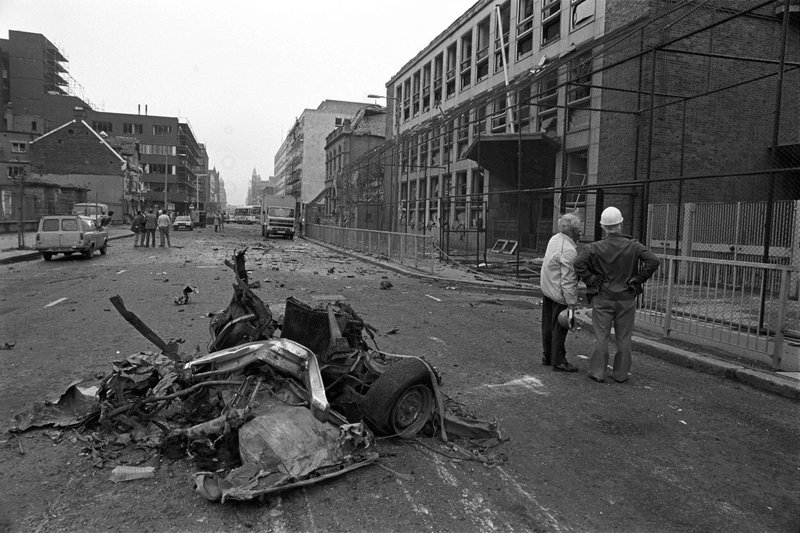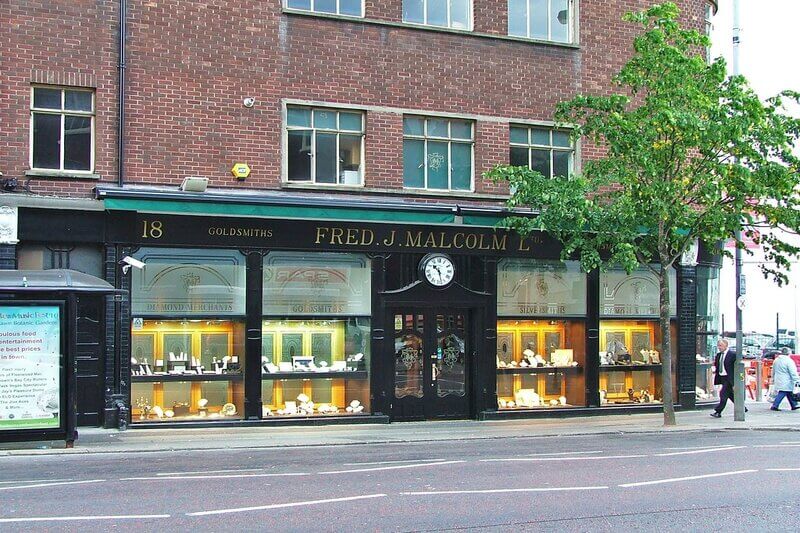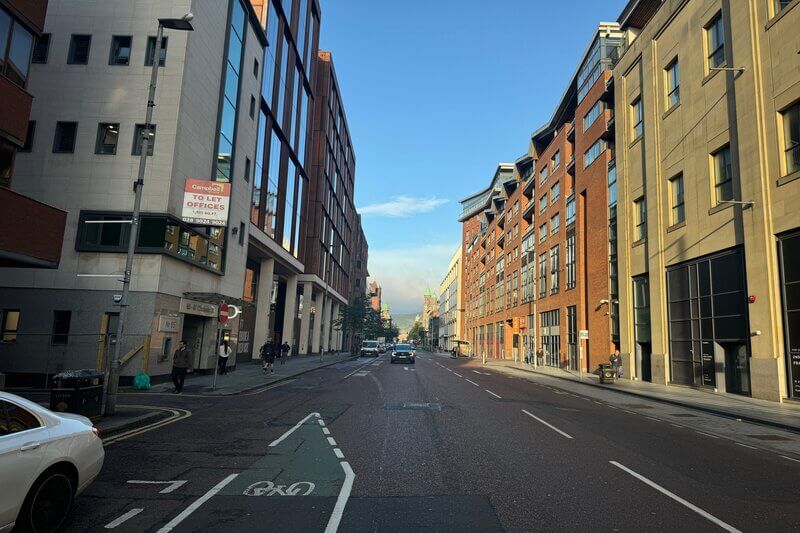Chichester Street is part of Belfast’s historic Linen Quarter, just a short walk from
Royal Avenue,
the city’s main shopping thoroughfare.
Beginning at
Donegall Square East
beside Belfast City Hall,
the street stretches down towards Victoria Street and on to the grand Royal Courts of Justice on Oxford Street.
Although it runs directly past the Courts, the section between Victoria Street junction and Oxford Street was permanently closed to vehicles during the 1980s. This was a security measure introduced after bombs planted by the IRA caused considerable damage in the area.

Chichester Street was once known as South Parade but was later renamed in honour of Sir Arthur Chichester, a central figure in Belfast’s early history. A soldier and veteran of the Spanish Armada, Chichester became the Crown’s leading official in Ireland in the early seventeenth century.

He viewed Irish Catholicism as a threat to English rule and
played a key role in shaping the Plantation of Ulster
following the 1607 Flight of the Earls.
In 1611, Chichester built a new Belfast Castle
on the site of an earlier Norman fortification at
Castle Place.
This development spurred the town’s growth, which was formally recognised in 1613 when Belfast was granted its Royal Charter.
The charter transformed Belfast from a small settlement into a planned town, laying the foundations for the modern city, his influence left a lasting mark on Belfast.
Today, Chichester Street is lined mainly with large office buildings, including the National Records Office,
the Land Registry, and a number of major corporate businesses.
It is also home to one of Belfast’s best-known pubs,
The Garrick Bar, which has been serving pints of Guinness for over a century. Along the street resides Fred Malcom’s,
one of Belfast’s oldest jewellers & diamond dealers.

Discover Belfast With Us
Every street in Belfast tells a story. Step aboard a Belfast open-top bus tour and uncover more than 50 fascinating landmarks and places of interest.









